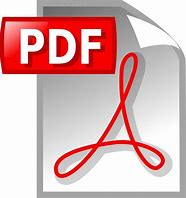| Citation |
Walker, I., Staw, T., Stewart, A. and Tiniou, E. 2050 Energy Infrastructure Outlook: Multi Vector Integration Analysis - Multi Vector Interactions Report - Report on multi-vector interactions and priority interactions shortlist, ETI, 2016. https://doi.org/10.5286/UKERC.EDC.000688. Cite this using DataCite |
| Author(s) |
Walker, I., Staw, T., Stewart, A. and Tiniou, E. |
| Project partner(s) |
Element Energy, Baringa, CNG Services Ltd, Liwacom |
| Publisher |
ETI |
| DOI |
https://doi.org/10.5286/UKERC.EDC.000688 |
| Download |
ESD_EN2017_3.pdf  |
| Abstract |
The project aims to improve the understanding of the opportunity for and implications of moving to more integrated multi vector energy networks in the future. Future energy systems could use infrastructure very differently to how they are employed today. Several individual energy vectors - electricity, gas and hydrogen - are capable of delivering multiple services and there are other services that can be met or delivered by more than one vector or network.
The report provides an initial assessment of potential interactions across energy vectors.This document is submitted as Deliverable 1.1 under the ETI’s “Multi-vector Integration Project”. The material is adapted from the presentation provided to the project steering group at the ‘Alignment Workshop’ held in London on June 24th 2016. The long-list of multi-vector interactions and the proposed filtering for further analysis in Work Package 2 were validated by the steering group during a follow up teleconference on July 4th2016, and this document reflects this validated set of interactions.
The presentation/report covers- Description of the methodology used to map and classify multi-vector interactions
- An initial assessment of each case, describing the system, the issues addressed, the current situation and the likely ‘materiality’ for the UK energy system
- The process used to filter and prioritise the cases, and the agreed shortlist
- A recap of the subsequent work to be undertaken in Work Packages 2 and 3
Vectors considered were- electricity,
- gas,
- hydrogen,
- district heating,
- liquid fuels
Services considered were- peak avoidance,
- flexibility using multiple vectorsto supply the same load,
- overcoming a generation capacity constraint,
- avoiding curtailment of a generation asset, and
- backing up an energy source
It is proposed that the following scenarios are taken forward for detailed analysis- Domestic scale heat pumps and peak gas boilers.
- Gas CHP and Heat Pumps to supply district heating and individual building heating loads
- CHP and heat pumps operating to supply heat to district heating
- CHP supplying district heating, with co-generated electricity used to power individual dwelling heat pumps
- PHEV switching fuel demand from electricity to petrol or diesel.
- RES to H2/RES to CH4
- RES to DH and “virtual” DH networks
- Anaerobic Digestion/Gasification to CHP or grid injection
|
| Associated Project(s) |
ETI-EN2017: 2050 Energy Infrastructure Outlook Multi Vector Integration Analysis |
| Associated Dataset(s) |
No associated datasets |
| Associated Publication(s) |
2050 Energy Infrastructure Outlook Multi Vector Integration Analysis - Barriers to Multi Vector Energy Supply 2050 Energy Infrastructure Outlook Multi Vector Integration Analysis - Multi Vector Integration Study (Assessment of Local Cases) 2050 Energy Infrastructure Outlook Multi Vector Integration Analysis - Summary report 2050 Energy Infrastructure Outlook: Multi Vector Integration Analysis - Multi Vector Interaction Cases Shortlist 2050 Energy Infrastructure Outlook: Multi Vector Integration Analysis - Request for Proposals |
|